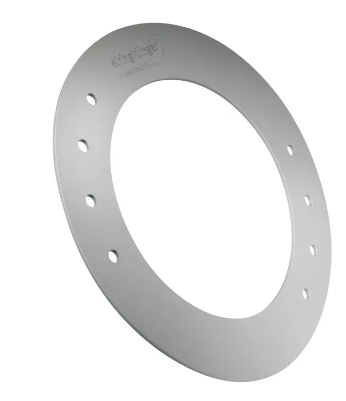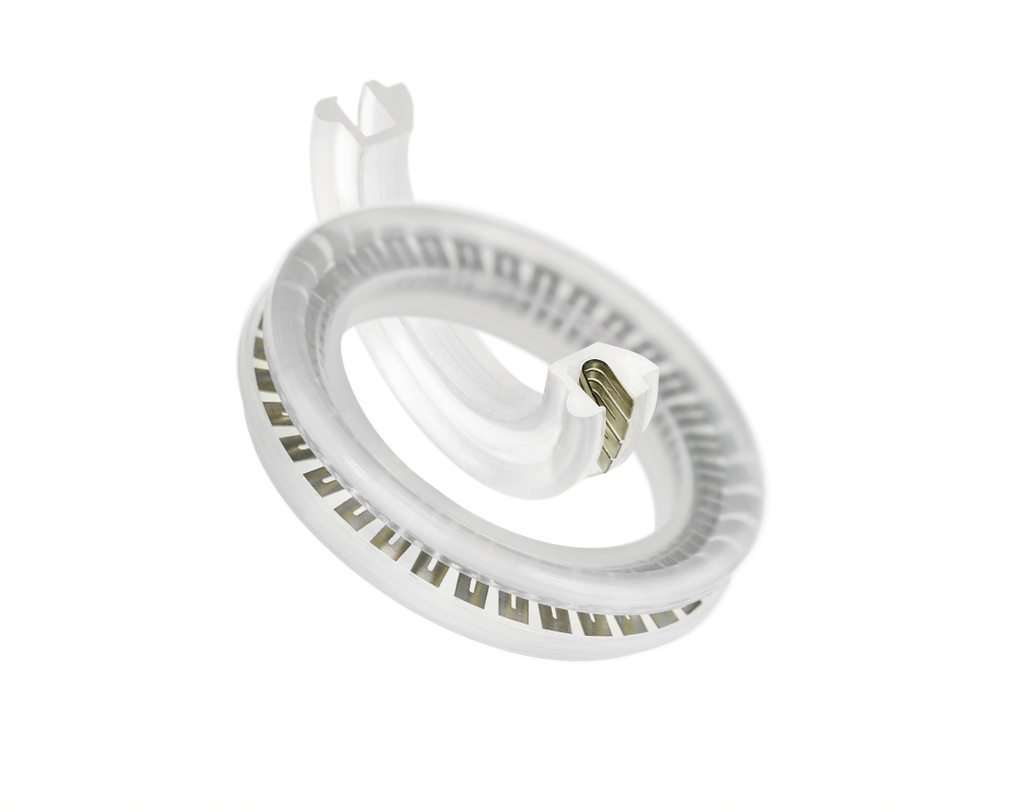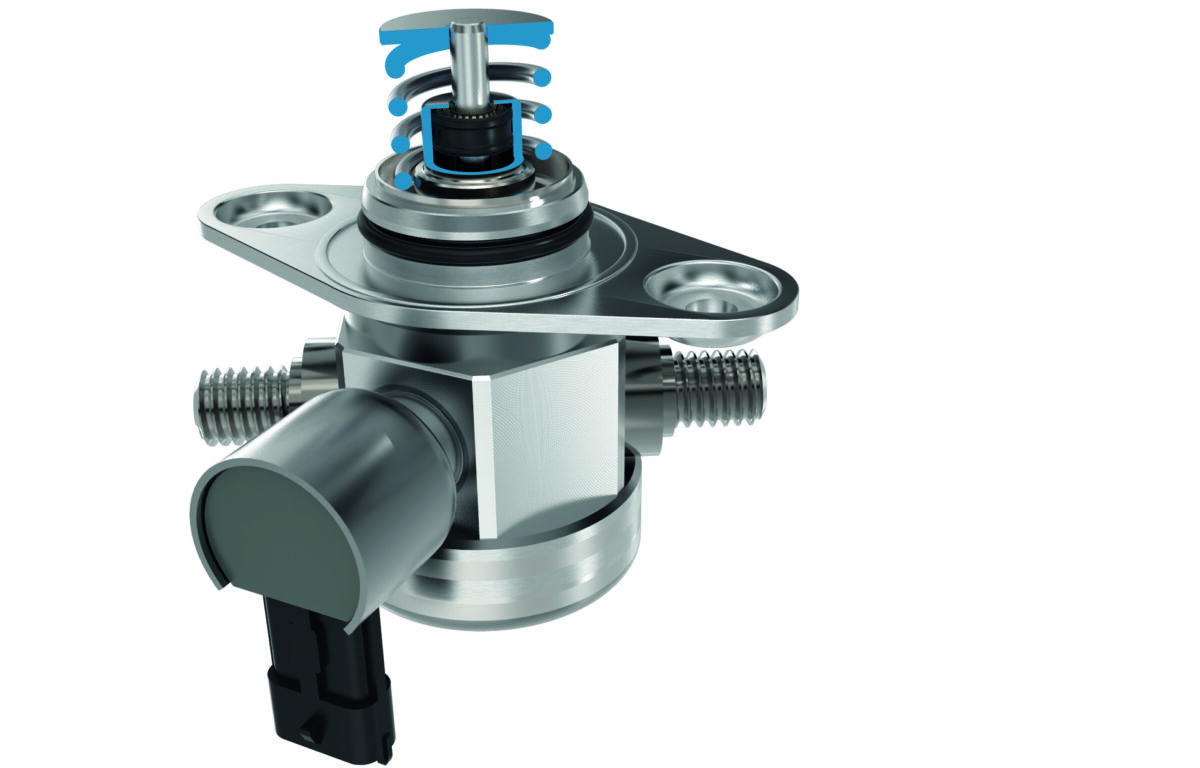- Which type of media need to be sealed off in fuel cell systems?
- What are the specific requirements for hydrogen in the context of fuel cell valve sealing?
- What is the difference between static sealing and dynamic sealing?
- Seals for hydrogen valves in fuel processing systems
- Valve design and valve types and their impact on the seal type selection
- Soft seal contact pressure characteristics on high-pressure hydrogen cylinder charge valves
- Piston or rod seal for static and dynamic sealing
Browse seals from leading suppliers on our marketplace!
Which type of media need to be sealed off in fuel cell systems?
- Condensate (H20)
- Air
- Hydrogen (H2)
What are the specific requirements for hydrogen in the context of fuel cell valve sealing?
Any component in contact with hydrogen must be selected carefully to comply with these special requirements, and to mitigate the associated risks:
- High pressure resistance
- Sealing integrity (in storage and electrochemical process)
- Thermal management of valves
- Prevent infiltration and embrittlement of seals
- No leakage
These components in contact with hydrogen include valves, but also joints, associated piping, couplers, and fittings.
These requirements are of particular importance on the high-pressure hydrogen tank, which is found both at the hydrogen filling station and in a vehicle or machine powered by a hydrogen fuel cell.
What is the difference between static sealing and dynamic sealing?
a) Static sealing
The characteristic of a static sealing is that there is no movement between the sealing surface and the mating surface. Depending on the design of the connection static sealings function as a radial static seal e.g. in pipes or cylinders, or as an axial static seal e.g. in flanges. The most common static sealings are o-rings and flat gaskets. To establish the sealing function, the static seals are squeezed during mounting.

Example of static sealing
b) Quasi static sealing
Sealings in pressure relief and on/off applications are mainly quasi static sealings. However, they respectively the valve must be designed in a way that they open either when a predefined pressure is reached or when they are actuated. The sealing function must be guaranteed as soon as the passage is closed again. Depending on the application requirements the number of cycles can vary a lot.

Example of quasi static sealing
c) Dynamic sealing
Proportional valves have a controlling function. They regulate the volume flow rate of a liquid or gas. They are used especially for dynamically changing fluid quantities. They are also known as control valves or used as pressure regulators. There is a translational and/or rotational movement between the sealing surface and the mating surface depending on the control requirement. This relative movement between the sealing and the counterpart defines a dynamic sealing. The type (translation / rotation) and velocity of the movement needs to be considered when choosing the dynamic sealing.

Example of dynamic sealing
Seals for hydrogen valves in fuel processing systems
What is the role of a valve in fuel processing systems?
Fuel cell systems are divided into four subsystems:
- Fuel processing system
- Air processing system
- Thermal management system
- Fuel cell stack
The functions of all subsystems are perfectly matched to achieve the best possible performance of the fuel cell.
In this context valves in the fuel processing system are required to supply and regulate the hydrogen flow at the inlet and to purge the condensate at the outlet of the device. Usually, two types of valves are used. One with on/off function to drain condensate or to shut off the tank, one proportional valve to dose the flow rate to the stacks inlet. Hydrogen regulator valves or tank overflow valves are examples here.
What is the role of the seal in hydrogen valves in fuel processing systems?
Seals are components used in interfaces between two functional elements in technical systems. The role of the seal is to prevent the unwanted loss of any media or pressure in the system. The seal should not have any impact on the ideal functioning of the unit. In practice, however, a compromise is necessary especially with dynamic seals. Because friction and material properties of the seal have a significant influence on efficiency.
In addition, handling of hydrogen is of critical importance as the gas is extremely volatile and highly flammable.
Therefore, seals in hydrogen valves used in fuel cell systems perform a very important function. Not only the efficiency, process stability and repeatability but also the safety of the entire system depends on them.
Which designs and materials are used for seals in hydrogen valves?
To ensure smallest possible leak rates in static and dynamic mode the design and material of the seal needs to be perfectly matched to the installation space and application data. Spring-energized seals in a special design are a good choice for hydrogen valves. The customized design of the sealing body and back-up ring supports the pressure resistance. High pressure resistant materials with reduced deformation under load and very low permeation rates are usually used, such as modified PTFE and PEEK compounds. But also more economical materials could be a choice if the functionality is proven.
What are the key performance criteria/requirements of fuel cell valve sealing in hydrogen valves?
Key performance requirements of seals are:
- Withstand high pressures over 800 bar
- Low leakage in static and dynamic mode
- High functional and chemical stability
- High reliability
- Low friction and wear
- Coping with extreme conditions, such as high/low temperatures or vibrations
- Comply to safety requirements during the expected life time
Valve design and valve types and their impact on the seal type selection
Hydrogen valves must control hydrogen flow with practically no leaks, which is achieved by using dependable seals with low hydrogen permeation. Different types of valve designs are used for sealing off media in fuel cell systems:
- Needle valve
- Ball valve
- Plunger-type / piston valve
- Rotary valve
- Bellows-type solenoid valve
The actuation mechanism used on a valve has a profound impact on the selection of the type of seal being used.
Valve seals are installed in various types of different valves used in fuel cell systems, which may be grouped into valves of the “proportional” or “pressure-regulating” type, which require dynamic sealing, and the “pressure-relief” type, and the on/off type”, each requiring static sealing:
a) Proportional valve
- Fuel cell stack inlet dosing valve
- Pressure-regulating valve
b) Pressure-relief valve
- thermal pressure relief valve
- pressure control valve
- boil-off valve
- Safety/shut-off valve
- Purge/drain valve
c) On/off valve
- Hydrogen tank shut-off valve
- Fuel cell condensate drain valve
- Hydrogen filling station charge valve
- Hydrogen cylinder shut-off valve (filling station)
Soft seal contact pressure characteristics on high-pressure hydrogen cylinder charge valves
The charge valve is an important component in the charging port of a high-pressure hydrogen storage cylinder (HP-HSC). Designed as an opener valve, it is normally closed after the HP-HSC is filled with hydrogen. In case of damage to the charge valve seal, this will seriously affect the stable operation of the hydrogen supply system and may even cause safety problems. The seal performance of the charge valve is therefore very important.
Parameters impacting performance of such a charge valve seal include pre-compression, seal width, and hydrogen pressure on the seal contact surface. In combination, these exert what is known as contact pressure on the seal, and are a factor in either undesirable or beneficial deformations, namely changes in shape, of the seal material. This phenomenon may be utilized for improvement of the seal performance in the design of a charge valve used in HP-HSC installations at hydrogen filling stations.

High Pressure Pump with Seals
Piston or rod seal for static and dynamic sealing
Sealing solutions for hydrogen storage, mobility and fuel cell installations require material expertise in polymers, synthetic rubber compounds, and mtals specific to hydrogen applications. This is especially critical in designs involving dynamic sealing, as accomplished using:
- High Speed Lip Seals
- Low Friction Lip Seals
Metal seals alone rarely yield satisfactory results in dynamic sealing applications. Furthermore in hydrogen applications embrittlement needs to be considered. Flexible, or shape-yielding seals made from compounds such as synthetic rubber, nitril-butadiene, or PTFE compounds perform much better in terms of dynamic sealing requirements. Specific to hydrogen valves, relevant components manufactured from these materials are:
- Fuel cell valve sealing rings
- Fuel cell valve radial seals
- Fuel cell valve lip seals
Many designs however require a composite approach, combining metal and soft materials in order to achieve the desired contact pressure characteristics and low permeability of hydrogen.
Spring-energized radial seals, or spring-loaded lip seals have yielded highly satisfactory results in terms of all key performance parameters to be complied with for both static and dynamic high-pressure hydrogen valve sealing applications.
Content contributed by ElringKlinger Engineered Plastics
ElringKlinger Engineered Plastics – Innovations in high-performance plastics – for over 50 years, ElringKlinger Engineered Plastics has been one of the technology leaders for seals, engineering design elements, assemblies and modules. At ElringKlinger, innovation always starts with the material. Due to in-house materials development and compounding, Polytetraflon™-PTFE materials and Moldflon™-thermoplastic materials can be customized. Optimal performance for our customers is achieved not only by means of component optimizations using the Finite Elements Method (FEA) but also by selecting suitable materials.
Last update: 15.1.2023











